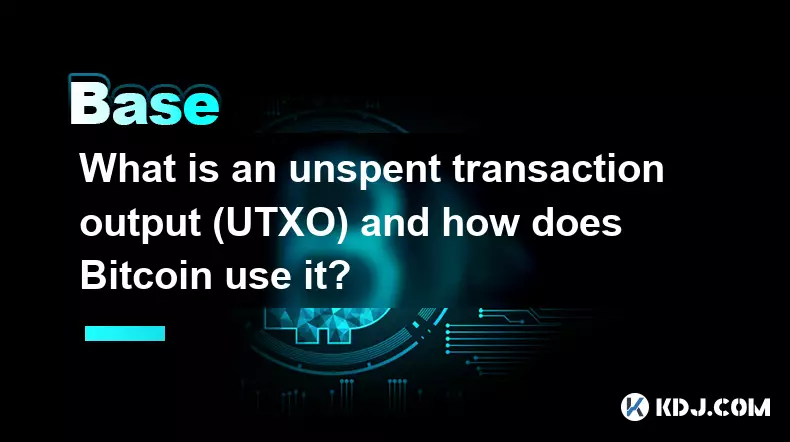-
 bitcoin
bitcoin $102182.982207 USD
-0.92% -
 ethereum
ethereum $3438.744518 USD
0.12% -
 tether
tether $0.999933 USD
0.02% -
 xrp
xrp $2.405093 USD
0.05% -
 bnb
bnb $956.306114 USD
-0.53% -
 solana
solana $153.028851 USD
-1.23% -
 usd-coin
usd-coin $0.999800 USD
-0.03% -
 tron
tron $0.294898 USD
-1.08% -
 dogecoin
dogecoin $0.171428 USD
-0.58% -
 cardano
cardano $0.551186 USD
-1.15% -
 hyperliquid
hyperliquid $38.755878 USD
0.04% -
 chainlink
chainlink $15.298460 USD
-0.05% -
 bitcoin-cash
bitcoin-cash $516.067428 USD
1.68% -
 stellar
stellar $0.280726 USD
-0.42% -
 zcash
zcash $518.919369 USD
18.01%
What is a node in a blockchain network and what is its purpose?
A blockchain node is any device maintaining the ledger, validating transactions, and ensuring network security, decentralization, and trustless consensus across distributed systems.
Nov 12, 2025 at 10:00 pm

Understanding Blockchain Nodes
1. A node in a blockchain network refers to any computer or device that participates in the decentralized system by maintaining a copy of the entire blockchain ledger. Each node communicates with others in the network to validate and relay transactions, ensuring consistency across the distributed database. These devices operate using specific protocols that govern how data is shared and verified.
2. Nodes play a critical role in preserving the integrity and security of the blockchain. By storing transaction history and confirming new blocks, they prevent tampering and double-spending. Without nodes, the trustless nature of blockchain would collapse, as there would be no way to independently verify the state of the network.
3. There are different types of nodes, including full nodes and lightweight (or SPV) nodes. Full nodes download every block and validate all transactions according to consensus rules. They enforce protocol standards and reject invalid data. Lightweight nodes, on the other hand, only download block headers and rely on full nodes for transaction details, making them less resource-intensive but also less independent.
4. Running a node allows users to interact with the blockchain directly without relying on third-party services. This enhances privacy and reduces dependency on centralized platforms. Individuals who run full nodes contribute to decentralization, making the network more resilient against attacks and censorship.
5. In proof-of-work systems like Bitcoin, miners often operate full nodes to ensure the blocks they mine comply with network rules. In proof-of-stake networks, validators are typically required to run nodes as part of their responsibility to propose and attest to blocks. The presence of numerous geographically dispersed nodes strengthens the anti-fragility of the entire ecosystem.
The Role of Consensus Mechanisms
1. Nodes participate in consensus mechanisms to agree on the validity of transactions and the order of blocks. Whether through proof-of-work or proof-of-stake, nodes work together to maintain a single version of truth across the network. This agreement process prevents malicious actors from altering historical data.
2. In proof-of-work, mining nodes compete to solve cryptographic puzzles, and once a solution is found, it is broadcasted to other nodes for verification. Only when a majority of nodes accept the block does it get added to the chain. This collective validation ensures that no single entity can control the ledger.
3. Proof-of-stake networks designate certain nodes as validators based on the amount of cryptocurrency they stake. These validator nodes take turns proposing and voting on new blocks. Other nodes monitor this process and reject any proposals that violate protocol rules, maintaining alignment across the network.
4. Consensus relies heavily on the number and distribution of active nodes. A higher number of independent nodes increases resistance to centralization and makes coordinated attacks economically unfeasible. Networks with too few nodes risk becoming vulnerable to manipulation or downtime.
5. Even non-mining or non-validating nodes contribute to consensus by independently verifying received data. If a node detects an inconsistency—such as an invalid signature or incorrect block reward—it will reject the information and not propagate it further, effectively acting as a checkpoint for network health.
Node Infrastructure and Network Resilience
1. The physical and software setup of a node determines its reliability and performance within the blockchain network. High-speed internet connections, sufficient storage capacity, and stable power supplies are essential for full nodes that handle large volumes of data continuously.
2. Open-source node software such as Bitcoin Core, Geth, or Lighthouse enables developers and enthusiasts to run their own instances. Regular updates to these clients introduce bug fixes, performance improvements, and new features that align with evolving network standards.
3. Decentralized infrastructure depends on diverse node operators located across various jurisdictions and internet service providers. Geographic dispersion minimizes the impact of localized outages or regulatory actions, ensuring uninterrupted operation of the blockchain.
4. Some projects incentivize node operation through staking rewards or governance rights. This encourages participation beyond early adopters and helps grow the network’s reach. However, incentive models must balance accessibility with security to avoid concentration among wealthy participants.
5. Public APIs provided by nodes allow wallets, exchanges, and dApps to query blockchain data without building their own infrastructure. While convenient, reliance on third-party nodes introduces counterparty risk, which is why many institutions choose to deploy private instances for mission-critical operations.
Frequently Asked Questions
What is the difference between a full node and a light node?A full node stores the complete blockchain and validates all transactions independently, enforcing consensus rules. A light node downloads only block headers and queries full nodes for specific transaction data, trading independence for lower storage and bandwidth requirements.
Can running a node earn cryptocurrency rewards?In most proof-of-work blockchains like Bitcoin, simply running a full node does not provide direct financial rewards. However, in proof-of-stake systems, nodes that act as validators can earn staking rewards for participating in block production and attestation.
Is it possible for a node to go offline without affecting the network?Yes, individual nodes can disconnect temporarily without disrupting the overall network. Blockchain systems are designed to function even if some nodes are inactive. However, long-term reductions in node count may weaken decentralization and fault tolerance.
Do all blockchain networks require users to run nodes?No, users can interact with blockchains through third-party services like hosted wallets or explorers without running a node. However, doing so sacrifices autonomy and trustlessness. Running a personal node offers greater control over one’s transactions and data.
Disclaimer:info@kdj.com
The information provided is not trading advice. kdj.com does not assume any responsibility for any investments made based on the information provided in this article. Cryptocurrencies are highly volatile and it is highly recommended that you invest with caution after thorough research!
If you believe that the content used on this website infringes your copyright, please contact us immediately (info@kdj.com) and we will delete it promptly.
- Altcoin Summer Heats Up: Token Burns and Major Updates Take Center Stage
- 2025-11-14 06:40:00
- Airdrop Anarchy: Unmasking Manipulation in the Crypto Wild West
- 2025-11-14 04:55:01
- BlockDAG, Airdrop Mania, and 2025: What's the Hype?
- 2025-11-14 05:15:01
- Michael Saylor, MSTR, and the Undervaluation Debate: A New York Perspective
- 2025-11-14 05:50:01
- dYdX, Buyback Program, and Community: A New Era for DeFi?
- 2025-11-14 04:50:01
- Avalanche, Liquid Yield, and Dynamic Rebalancing: A New Era for DeFi?
- 2025-11-14 05:30:01
Related knowledge

What is the difference between a transparent and a shielded transaction?
Nov 10,2025 at 05:59pm
Understanding Transparent Transactions in Cryptocurrency1. Transparent transactions are the standard form of transaction on most public blockchains li...

What is a "crypto airdrop farmer" and what strategies do they use?
Nov 09,2025 at 03:39pm
What Is a Crypto Airdrop Farmer?1. A crypto airdrop farmer is an individual who actively participates in blockchain projects to qualify for free token...

What is an unspent transaction output (UTXO) and how does Bitcoin use it?
Nov 12,2025 at 01:40am
Understanding the Concept of Unspent Transaction Output (UTXO)1. An Unspent Transaction Output, commonly referred to as UTXO, is a fundamental compone...

What is a "governance attack" and how can a DAO be compromised?
Nov 14,2025 at 05:59am
Understanding Governance Attacks in Decentralized Autonomous Organizations1. A governance attack occurs when an individual or group gains disproportio...

How do you track a crypto portfolio across multiple wallets and chains?
Nov 12,2025 at 04:19pm
The Evolution of Decentralized Exchanges in the Crypto Ecosystem1. Decentralized exchanges (DEXs) have transformed how users trade digital assets by r...

How does a crypto insurance protocol work?
Nov 08,2025 at 12:39am
Understanding Crypto Insurance Protocols1. A crypto insurance protocol operates by offering financial protection against losses incurred from digital ...

What is the difference between a transparent and a shielded transaction?
Nov 10,2025 at 05:59pm
Understanding Transparent Transactions in Cryptocurrency1. Transparent transactions are the standard form of transaction on most public blockchains li...

What is a "crypto airdrop farmer" and what strategies do they use?
Nov 09,2025 at 03:39pm
What Is a Crypto Airdrop Farmer?1. A crypto airdrop farmer is an individual who actively participates in blockchain projects to qualify for free token...

What is an unspent transaction output (UTXO) and how does Bitcoin use it?
Nov 12,2025 at 01:40am
Understanding the Concept of Unspent Transaction Output (UTXO)1. An Unspent Transaction Output, commonly referred to as UTXO, is a fundamental compone...

What is a "governance attack" and how can a DAO be compromised?
Nov 14,2025 at 05:59am
Understanding Governance Attacks in Decentralized Autonomous Organizations1. A governance attack occurs when an individual or group gains disproportio...

How do you track a crypto portfolio across multiple wallets and chains?
Nov 12,2025 at 04:19pm
The Evolution of Decentralized Exchanges in the Crypto Ecosystem1. Decentralized exchanges (DEXs) have transformed how users trade digital assets by r...

How does a crypto insurance protocol work?
Nov 08,2025 at 12:39am
Understanding Crypto Insurance Protocols1. A crypto insurance protocol operates by offering financial protection against losses incurred from digital ...
See all articles










































































